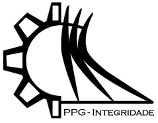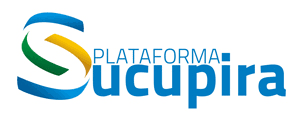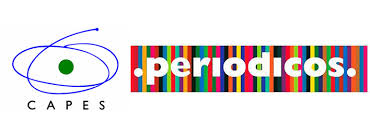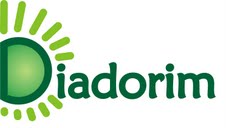ARTIFICIAL NEURAL NETWORKS FOR MATERIAL CLASSIFICATION IN PURCHASING PORTFOLIO MANAGEMENT
DOI:
https://doi.org/10.26512/ripe.v2i10.21726Palavras-chave:
Strategic sourcing. Kraljic portfolio matrix. Supervised learning. Classification problem. Artificial neural network.Resumo
Strategic sourcing is an important technique within supply chain management area that allows companies to understand their purchasing portfolio and to better take advantage of their bargain power versus key suppliers, reducing supply risks to an acceptable minimum. The Kraljic portfolio matrix is an important model for evaluating materials and services categories in two main aspects: the importance of a particular purchasing and the complexity of the supply market. Although, the classification phase can present a hard task depending on the number of materials and the complexity of a specific portfolio. In this context, the present work proposes the application of machine learning classifiers ”“ artificial neural network, extreme learning machine and K-nearest neighbors ”“ for material grouping in a data set of 1,560 active items composing the electric and electronic portfolio components of a large Brazilian transportation company. Eight features are used for classifying material purchase and maintenance criticality. The artificial neural network presented an accuracy of 94.77% for purchase and 60.41% for maintenance classification.
Downloads
Referências
Brun, A., & Pero, M., 2011. Assessing suppliers for strategic integration: a portfolio approach. International Journal of Business Excellence, vol. 4, n. 3, pp. 346-370.
Cai, H., Yu, T., & Xia, C., 2014. Quality-oriented classification on aircraft material based on SVM. Mathematical Problems in Engineering, vol. 2014, pp. 1-12.
Cunningham, P., & Delany, S, J., 2007. K-nearest neighbour classifiers. Multiple Classifier Systems, pp. 1-17.
Haykin, S., 1999. Neural Network - A comprehensive foundation. Prentice Hall International, second edition.
Huang, G. B., Zhu, Q. Y. & Siew, C. K., 2006. Extreme learning machine: theory and applications. Neurocomputing, vol. 70, no. 1, pp. 489-501.
Huang, G.B., 2015. What are extreme learning machines? filling the gap between Frank Rosenblatts dream and John Von Neumanns puzzle. Cognitive Computation, vol. 7, no. 3, pp. 263278,
Kohavi, R., 1995. A study of cross-validation and bootstrap for accuracy estimation and model selection, International Joint Conference on Articial Intelligence, vol. 14, no. 2, pp. 1137-1145.
Kraljic, P., 1983. Purchase must become supply management. Harvard Business Review, vol. 61, n. 5, pp. 109-117.
Lee, D. M, & Drake, P. R., 2010. A portfolio model for component purchasing strategy and the case study of two South Korean elevator manufacturers. International Journal of Production Research, vol. 48, n. 22, pp. 6651-6682.
Osiro, L., Lima, R. H. P., Lima Junior, F. R., & Carpinenetti, L. C. R., 2013. Proposta de uso de redes neurais artificiais em uma matriz de portflio de compras. XXXIII Encontro Nacional de Engenharia de Producao, Salvador, Bahia, Brasil, Outubro de 2013.
Padhi, S. S., Wagner, S. M., & Aggarwal, V., 2012. Positioning of commodities using the Kraljic Portfolio Matrix. Journal of Purchasing & Supply Management, vol. 18, n. 1, pp. 1-8.
Pedregosa, F., Varoquaux, G., Gramfort, A. and Michel, V., Thirion, B., Grisel, O., Blondel, M., Prettenhofer, P., Weiss, R., Dubourg, V., Vanderplas, J., Passos, A., Cournapeau, D., Brucher, M., Perrot, M. & Duchesnay, E., 2011. Scikit-learn: Machine Learning in Python. Journal of Machine Learning Research, vol. 12, pp. 2825-2830.
Downloads
Publicado
Como Citar
Edição
Seção
Licença
Autores que publicam nesta revista concordam com os seguintes termos:
Autores mantém os direitos autorais e concedem à revista o direito de primeira publicação, sendo o trabalho simultaneamente licenciado sob a Creative Commons Attribution License o que permite o compartilhamento do trabalho com reconhecimento da autoria do trabalho e publicação inicial nesta revista.
Autores têm autorização para assumir contratos adicionais separadamente, para distribuição não-exclusiva da versão do trabalho publicada nesta revista (ex: publicar em repositório institucional ou como capítulo de livro), com reconhecimento de autoria e publicação inicial nesta revista.
Autores têm permissão e são estimulados a publicar e distribuir seu trabalho online (ex: em repositórios institucionais ou na sua página pessoal) a qualquer ponto antes ou durante o processo editorial, já que isso pode gerar alterações produtivas, bem como aumentar o impacto e a citação do trabalho publicado.









